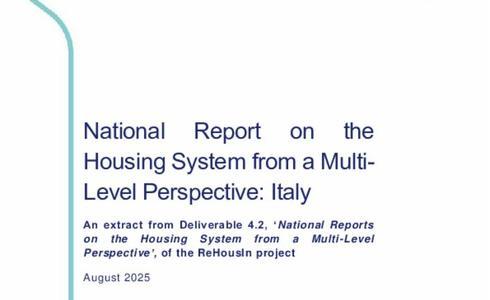National report on the housing system from a multi-level perspective: Italy
An extract from Deliverable 4.2 “National reports on the housing system from a multi-level perspective”
The Italian housing system is relatively commodified and homeownership-oriented, marked by a progressive marginalization of the private rental (PRS) and public housing (ERP) sectors, and a very small intermediate social rental sector (ERS). Housing policy in Italy remains fragmented, marked by weak national coordination and considerable regional and local disparities, after devolution of competences with funding cuts. Despite high eviction rates and over-representation of poverty among tenants, public discourse and policymaking continue to be dominated by a strong bias towards homeownership. Public housing (ERP) has been defunded and residualised, functioning as a safety net for the most vulnerable with very limited turnover, while the intermediate sector (ERS) is mainly shaped by market logic and financial capital.
Beside some rhetorical shifts, public investment in de-commodified rental housing remains scarce, and land assets that could enable the production of affordable housing are privatized to comply with austerity and attract private capital. The private rental market was deregulated in the 1990s and has undergone significant commodification – recently accelerated by touristification dynamics. Within the Italian housing system, policies linked to the ecological transition risk reinforcing existing inequalities. Without stronger coordination, redistributive policies, a focus on decommodification and support for non-market actors, the transition risks deepening socio-spatial inequalities.

Publication date:
Languages: English